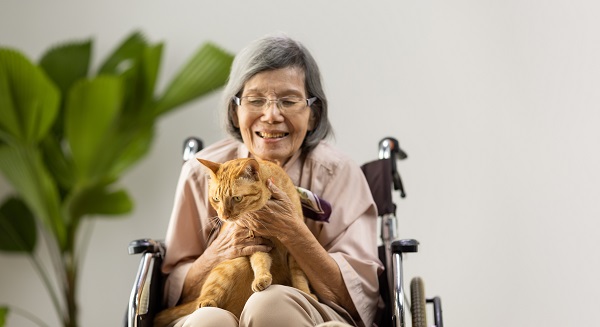Lewy Body Dementia Awareness Month

Lewy body dementia (LBD) is a degenerative disease caused by abnormal protein deposits in the brain. These deposits, called Lewy bodies, cause changes in brain chemicals that can affect thinking, movement, behavior, and emotions.
Although LBD it is not as well-known as Alzheimer’s disease or Parkinson’s disease, it is not a rare disorder. It affects more than a million people in the U.S., most of them older adults. Among the types of dementia, only Alzheimer’s disease and vascular dementia are more common.
There are two types of LBD: dementia with Lewy bodies and Parkinson’s disease dementia. The outward signs of these two types are different, but the biological changes in the brain are the same. The disease lasts an average of 5 to 7 years between the time of diagnosis to death, but this varies greatly from person to person.
The causes and risk factors of LBD are not fully understood; neurologists believe that age is the greatest risk factor, while genetics, lifestyle and other health conditions may also be involved.
What are the symptoms of LBD?
In the earliest stages of LBD, symptoms can be mild, and patients usually experience little change in function. The first noticeable changes are similar to those of a person with Alzheimer’s disease. But over time, other symptoms suggest the diagnosis of LBD. The National Institute of Neurological Disorders and Stroke (NINDS) says these include:
- visual and sometimes auditory hallucinations
- fluctuations in thinking, attention, and alertness
- slowness of movement, difficulty walking, or rigidity
- sleep disorders, including REM sleep behavior disorder, in which people physically act out their dreams by yelling, flailing, punching bed partners, and falling out of bed
- greater problems with complex mental activities, such as multitasking, problem solving, and analytical thinking, than with memory
- changes in behavior and mood, such as depression, apathy, agitation, delusions and paranoia
People with LBD can also experience other physical changes, such as blood pressure problems, fluctuating body temperature, dizziness, fainting and incontinence.
In Parkinson’ disease dementia, the other type of LBD, symptoms begin with slowed movement, muscle stiffness, tremor, and a shuffling walk, and thinking problems and behavior changes arise later.
How is LBD diagnosed?
As mentioned above, LBD can be hard to diagnose because diagnosis is based on symptoms, and the early symptoms are very similar to those of Alzheimer’s disease and other conditions. Blood tests and brain scans are useful mainly to rule out other disorders. Family members can be of help, sharing observations about changes in their loved one.
Can LBD be treated?
At present, LBD cannot be prevented or cured, but some symptoms may respond to treatment for a period of time. A neurologist who specializes in the condition can make these recommendations. Physical therapists, speech therapists, occupational therapists and other professionals can also be important members of the care team.
Certain medications are prescribed to address the cognitive, movement, sleep, behavioral and mood problems in people with LBD. But some medications that are helpful for people with other disorders can make things worse for people with LBD, so close medical supervision is vital. “Certain medications used to treat LBD symptoms or other diseases may also cause behavioral problems,” warns the NINDS. “For example, some sleep aids, pain medications, bladder control medications, and drugs used to treat LBD-related movement symptoms can cause confusion, agitation, hallucinations, and delusions. Similarly, some anti-anxiety medicines can actually increase anxiety in people with LBD.”
Living with LBD
The NINDS stresses that creating the best possible quality of life for people with LBD is a central goal of treatment and care:
Get support from family, friends and professionals. People with LBD will need help with tasks such as managing medications, paying bills, preparing meals and transportation. Care may be provided at home, with the help of professional caregivers or an adult day center. Moving to a supported senior living community also may be the best choice.
Create a safe living environment. Reduce the risk of falls by removing clutter, improving lighting, and installing grab bars in the bathroom. Stairs may be modified with ramps.
Plan for the future. Work with an elder law attorney, a financial planner and an aging life care professional (geriatric care manager) to locate resources and benefits to which the person might be entitled.
Focus on quality of life. People with LBD can still enjoy moments of tenderness, humor and pleasure in life. With modifications, they can continue to enjoy favorite activities. There are activity programs geared for people who are living with dementia, as well as support groups for people with LBD. Today many of these are meeting virtually.
The information in this article is not intended to replace the advice of your health care provider. Talk to your doctor if you have concerns about changes in your own or a loved one’s thinking and behavior.
Source: IlluminAge AgeWise with information from the National Institute on Neurological Disorders and Stroke.
![Health Concepts [logo]](https://healthconceptsltd.com/wp-content/themes/healthconcepts-corporate/images/logo.png)
